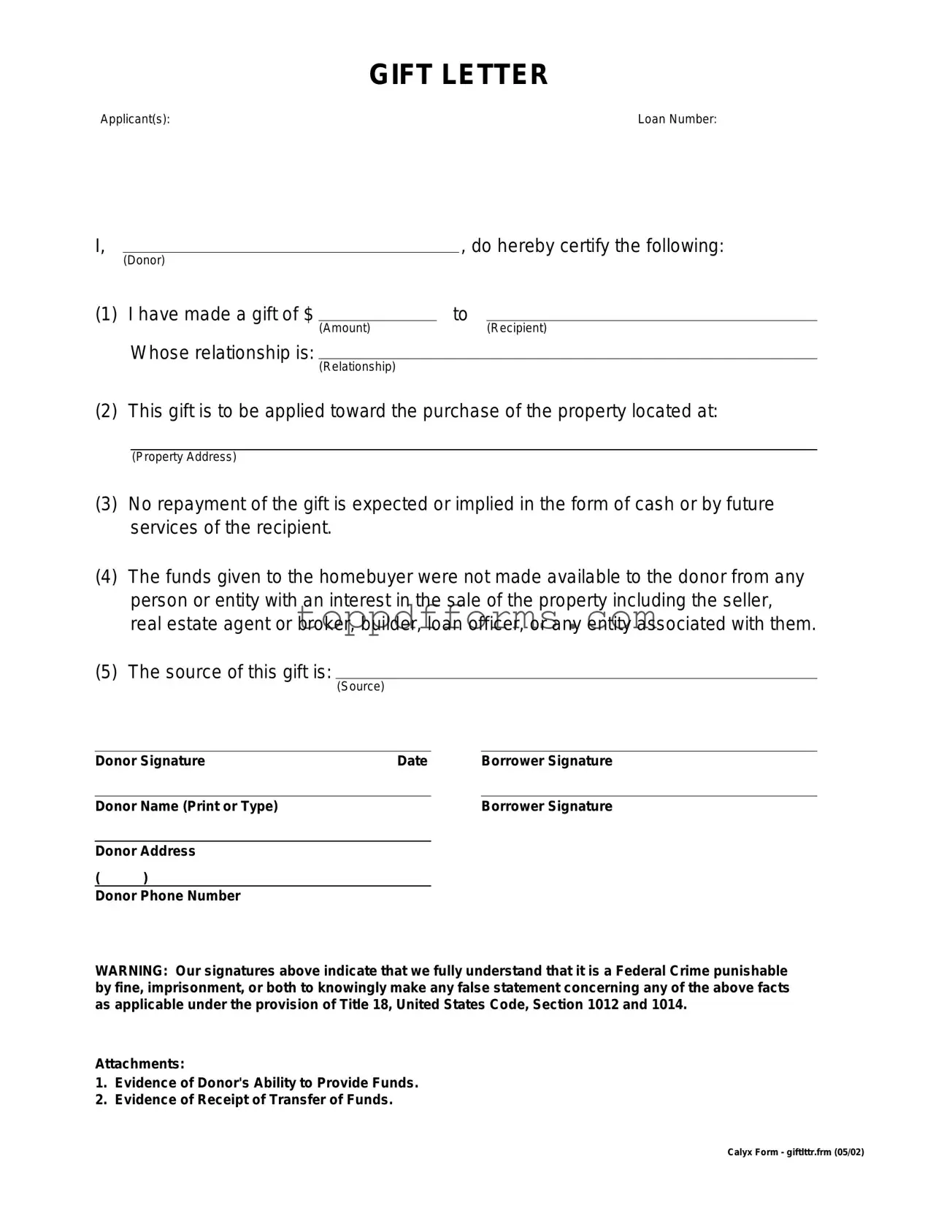What is a Gift Letter form?
A Gift Letter form is a document that outlines a financial gift given to a borrower, typically for the purpose of purchasing a home. It serves to clarify that the money received is a gift and not a loan, ensuring that the borrower is not obligated to repay the amount. This form is often required by lenders during the mortgage application process.
Who can provide a Gift Letter?
Anyone can provide a Gift Letter, but it is commonly given by family members, such as parents, siblings, or grandparents. Friends may also provide a gift, but lenders usually prefer that gifts come from close relatives. The relationship between the giver and the recipient must be clearly stated in the letter.
What information should be included in a Gift Letter?
A Gift Letter should include several key pieces of information. This includes the donor's name, address, and relationship to the recipient. The letter should also specify the amount of the gift, state that the funds are a gift and not a loan, and include the donor's signature. Some lenders may have specific requirements, so it’s important to check with them.
Do I need to provide proof of the gift?
Yes, lenders often require proof of the gift in addition to the Gift Letter. This may include bank statements or transaction records showing that the funds were transferred from the donor to the recipient. Providing this documentation helps verify that the money is indeed a gift and not a loan.
Can I use a Gift Letter for any type of loan?
While Gift Letters are commonly used for mortgage loans, they may not be accepted for all types of loans. Lenders typically have specific policies regarding gifts for different loan types. It is advisable to consult with the lender to confirm whether a Gift Letter is acceptable for the particular loan you are seeking.
Is there a limit on how much money I can receive as a gift?
There is no universal limit on the amount of money that can be given as a gift; however, lenders may have their own guidelines. Additionally, the IRS has annual gift tax exclusions that may affect large gifts. As of 2023, the annual exclusion amount is $17,000 per recipient. Gifts exceeding this amount may require the donor to file a gift tax return.
What happens if the Gift Letter is not provided?
If a Gift Letter is not provided, it may complicate the mortgage approval process. Lenders want to ensure that all funds used for the down payment are legitimate and not loans that could affect the borrower’s ability to repay the mortgage. Without a Gift Letter, the lender may deny the application or require additional documentation.
Can I modify a standard Gift Letter template?
Yes, you can modify a standard Gift Letter template to fit your specific situation. Ensure that all required information is included and that the letter accurately reflects the nature of the gift. However, it is essential to maintain clarity and formality in the document to meet lender requirements.
